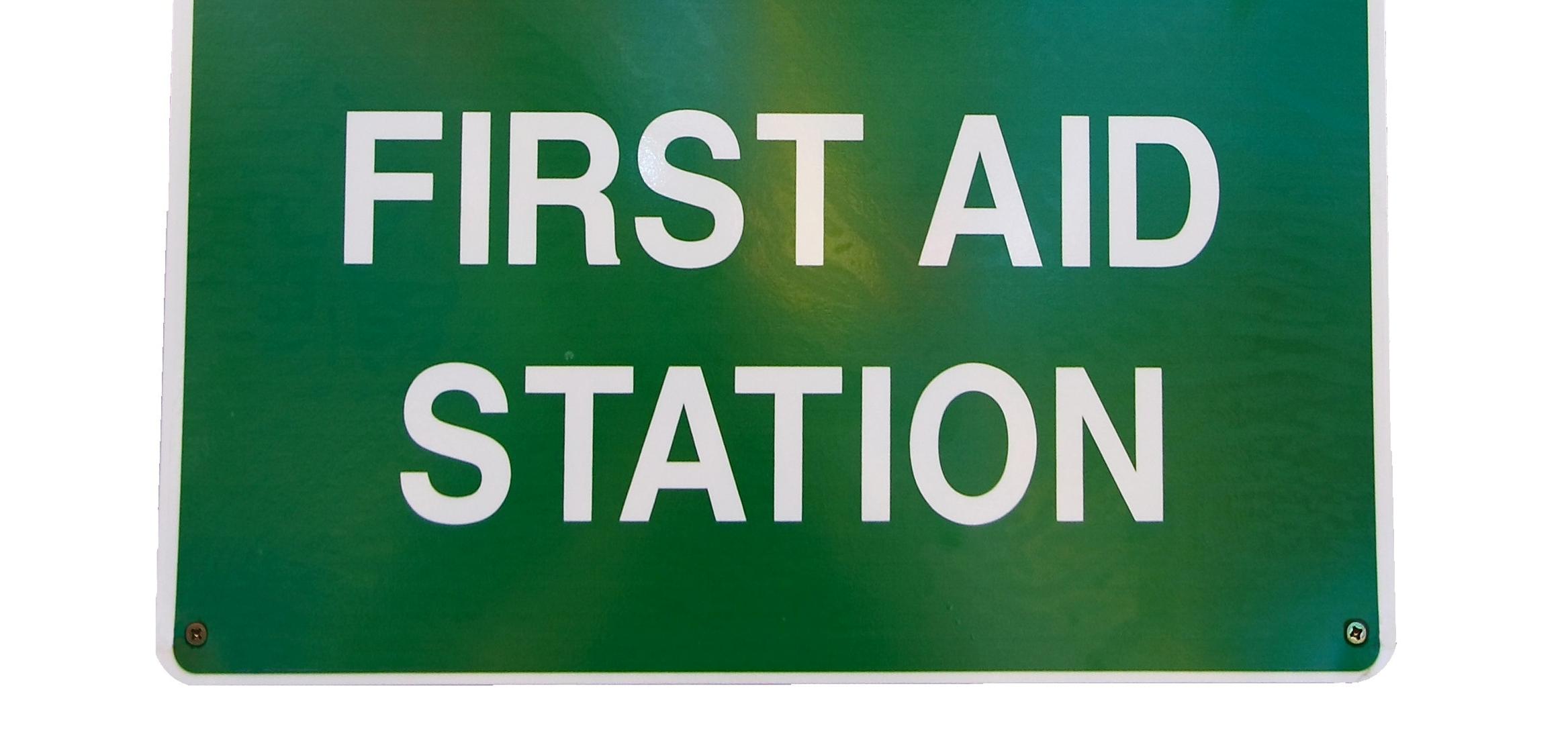First Aid at the Library – Keeping Calm is Key

Moments before opening, a library staff member suddenly collapses. Heart attack. Nearby colleagues scramble into action. One finds the supervisor. Another rushes to the victim. A third calls 911. The last fetches the defibrillator. Unlike Pima County (Arizona) most public libraries cannot afford to hire their own on-site library nurses.
However, in almost all cases, at least one person of your on-duty library staff is prepared and capable. Even if they don’t realize it, they can do it. Gone are the days and days of training and practice to implement complicated triage and treatment plans. Most libraries, like other public places, are quickly reached by emergency personnel. First aid and care seldom need to be sustained for more than a few minutes. We’re not at remote locales in some far-lung corners of the world. Just a few precious minutes is all that is required.
The list of steps to take is short. And simple.
First, call 911.
Second, assess the situation.
Third, take action.
If you’re alone, call 911 and leave the phone line open. They will find you. If others are around, shout out loud and clear, “Call 911!” Whoever calls first can expect to stay on the line until rescue squads arrive. Never let a victim talk you out of summoning the professionals; there are legal requirements about which only the medics know.
When you reach the victim, the new ABC guidelines from the American Heart Association are: Awake? Breathing? Care.
Awake. If they are not awake, try to wake them by vigorously shaking both shoulders or rubbing your knuckles up and down the sternum while shouting, “Are you OK?” If the victim is awake, keep them still and try to talk to them.
Breathing. A conscious victim may not be breathing if choking. So ask, “Are you choking?” Try to determine if an unconscious victim is breathing. Sometimes, that is difficult. But turning blue is a good indication he or she is not breathing.
At the same library mentioned in the opening paragraph, a few weeks after the heart attack incident, a patron faints and falls, striking her head hard against the floor. Two librarians witness the event and act. One treats the victim. The other calls 911. A supervisor is summoned.
Care. Remember, the rescue crew is bursting through the door any second. You don’t need a mental encyclopedia of first aid protocols. Just a few basics. Following are some of the most common public incidents and immediate action you can take.
Cardiac Arrest. Ideally, you have automated external defibrillators AEDs . These are really smart machines which literally talk you through the process. Pardon the expression, but they are dummy-proof. You cannot shock a patient who doesn’t need it. But, if you don’t have an AED, the new procedure for Cardiopulmonary Resuscitation (CPR) is simply compressions, or hands-only CPR. No breaths required. Push hard and fast in the center of the chest.
Choking. The Heimlich Maneuver is still the preferred treatment. Treat the victim like a squeeze box — http://www.youtube.com/watch?v=kJDpr05zmB4.
Bleeding. Stemming the flow with direct pressure using a paper towel, a handkerchief, even a bare hand will do until EMTs arrive. No need to worry about fancy wraps or bandages or slings or splints.
Falls. Unless you witness the event, always assume the victim strikes his head. Keep the patient still and summon emergency personnel.
Staff at that unfortunate library later reported feelings of inadequacy. But they performed. And performed well. Remaining calm under pressure is key. Minutes. That’s all the care that is usually required. You can do it.
Tags: first aid at the library












